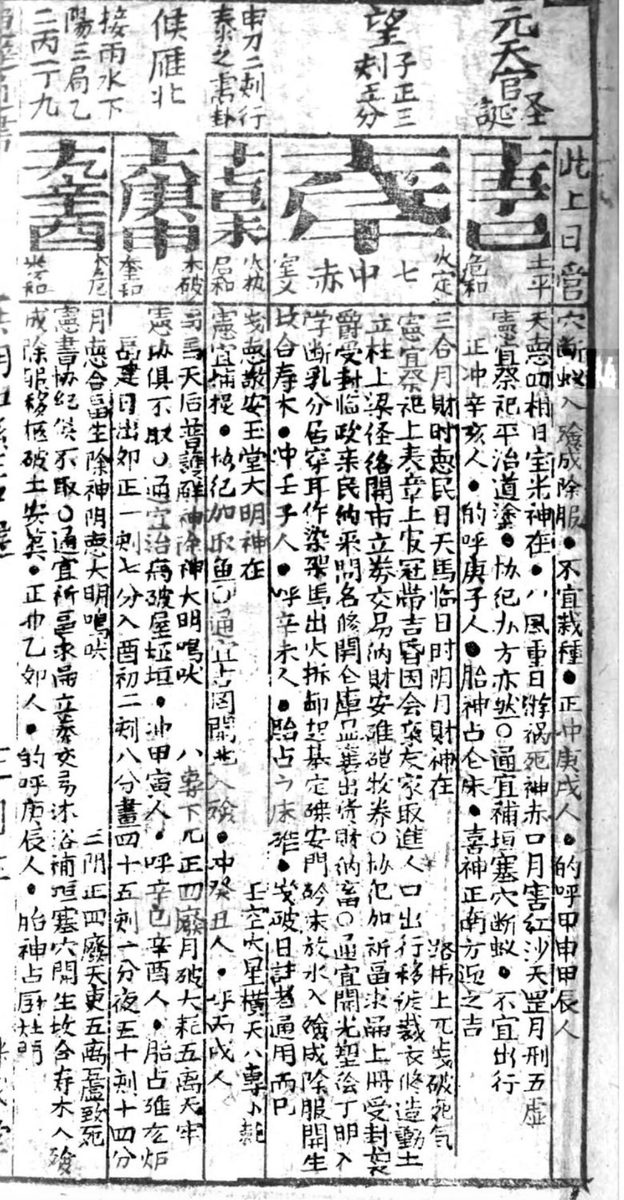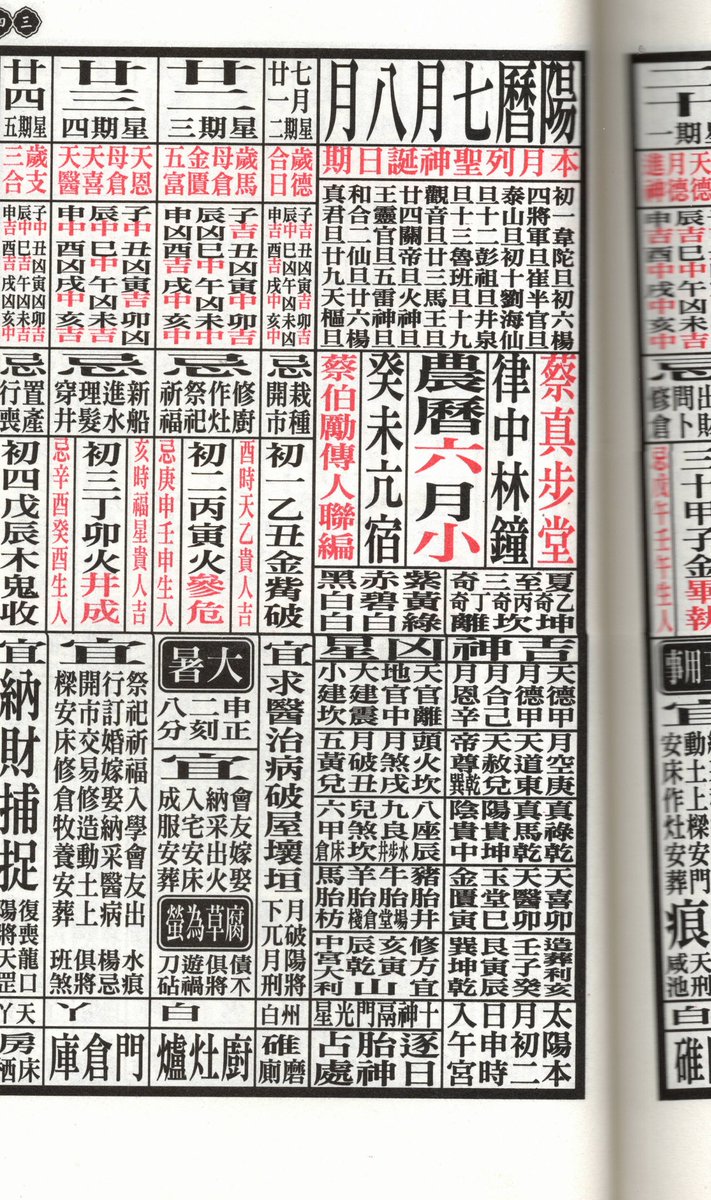As for Ju Bao lou, This is published on the mainland China. & is endlessly pirated. I know of at least two versions. One version (seen here) is probably for export. It is printed on good paper, has clear type, and is neatly bound.
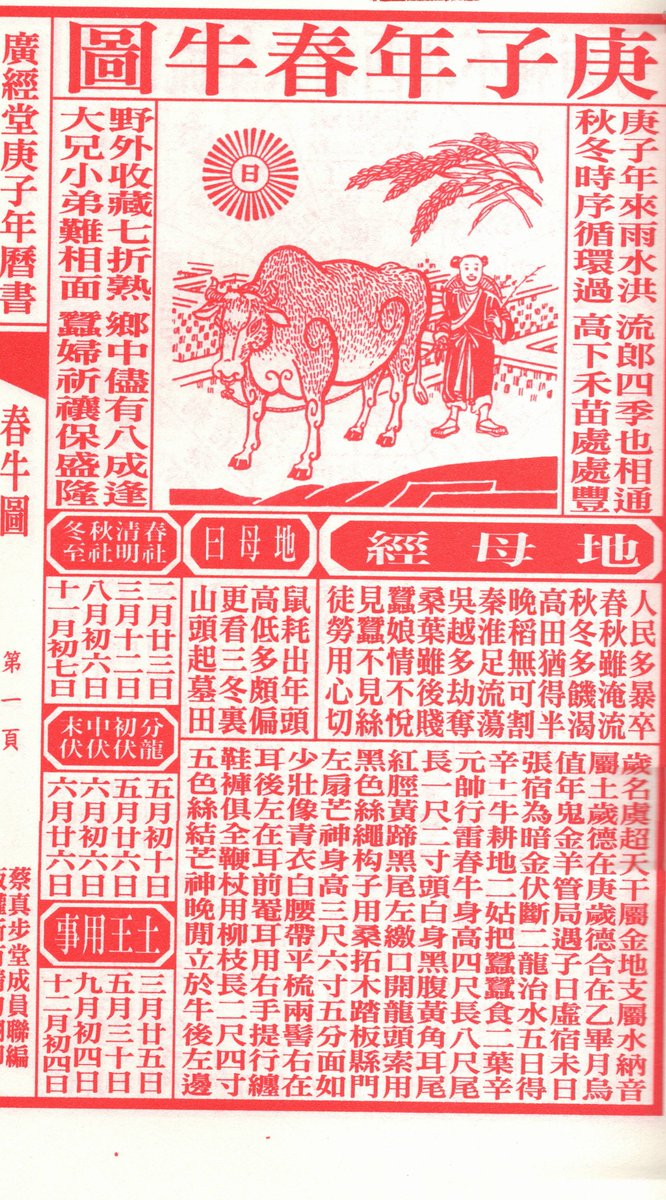
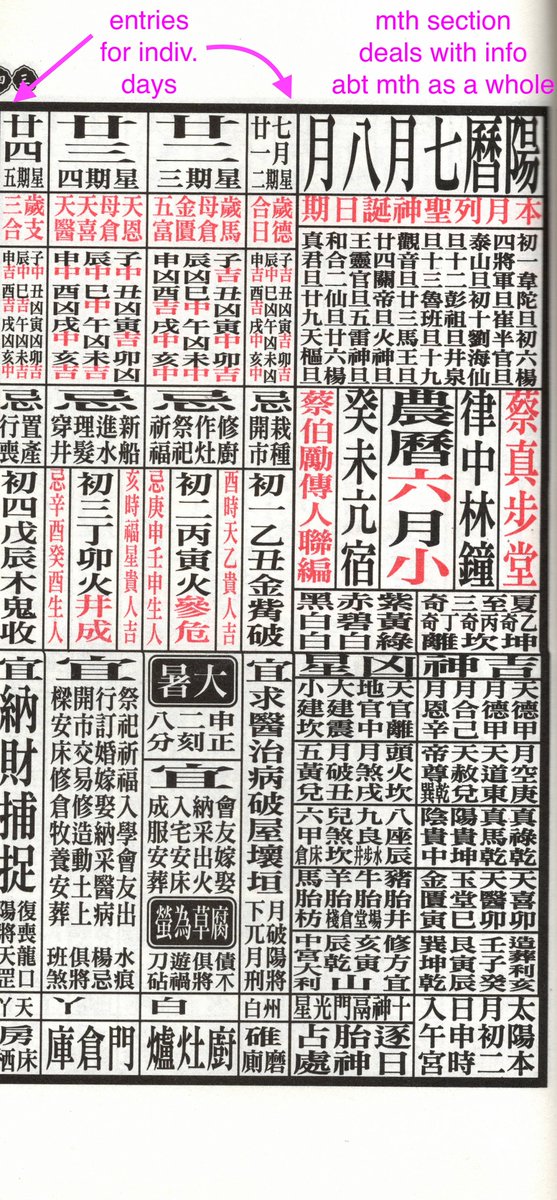
a)Western [Gregorian ]calendar date
b)Auspicious shensha present for today
c)How [in]auspicious the 12 “shi” (= 2 hr period) of the days are
d)Things u shld not do 忌 today

amazon.co.uk/Imperial-Guide…
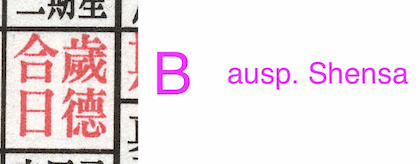
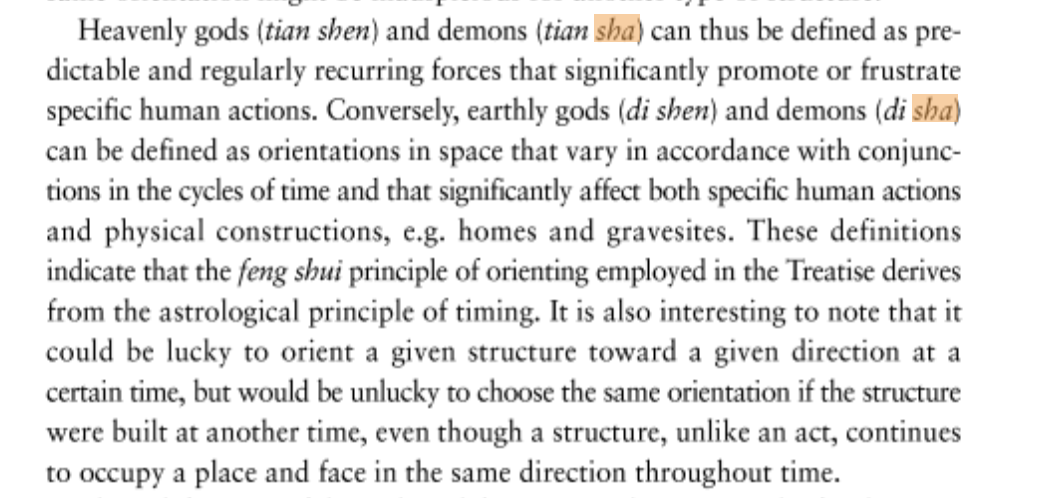
Establish 建
Remove 除
Fill滿
Level平
Fix定
Catch執
Break破
Danger危
Complete成
Collect 收
Open開
Shut 閉
It follows days with the EB of the goat are assigned “Establish”
Days with Eb of monkey [i.e. the next] are called “rid”
chicken D. are assigned "fill”
Dog D. are assigned Level
Pig D. are assigned Fix etc etc etc.
Days with EB of monkey are assigned "Establish"
Days with EB of Chicken are assigned "Remove/rid"
[...]
Dats of EB Goat are assigned "shut"
That way, the Day officer attached to a particular EB changes from mth to mth.

It is in the 2nd ke, or the second 15 minute period—4: 30 PM
Finally, it states 8 fen,-- thus 8 minutes. In other words, the sun entered the point of Dashu 大暑 on 4:38 PM
nippon.com/en/features/h0…
but they yet persist -- if only as a calendarical curiosity in China. (Much as the Chinese Penjing 盆景 becomes the Japanese Bonsai)
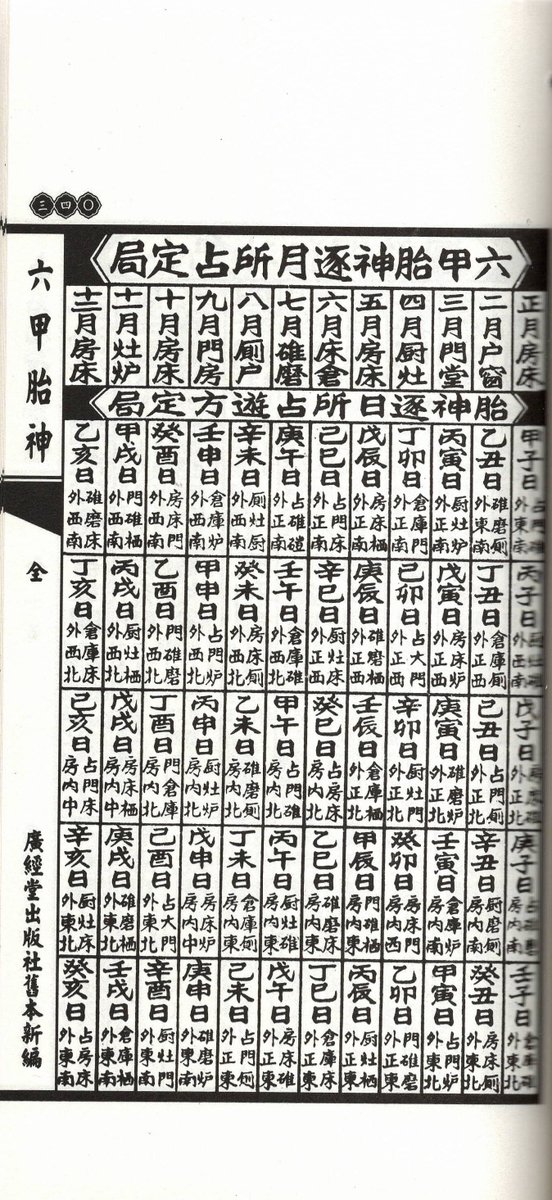
Pig's foetal god resides in the well
Cow's Foetal god is in the hall or field
The Goat's Fetal god is in the storehouse
and the horse fetal god is in the timber pile [?] 枋
1: 白鶴鳴作品(1241)通勝解密The mysteries of the almanac revealed
2. 白鶴鳴作品 第120部-教你查通勝旺家宅 How to read the almanac and prosper.
